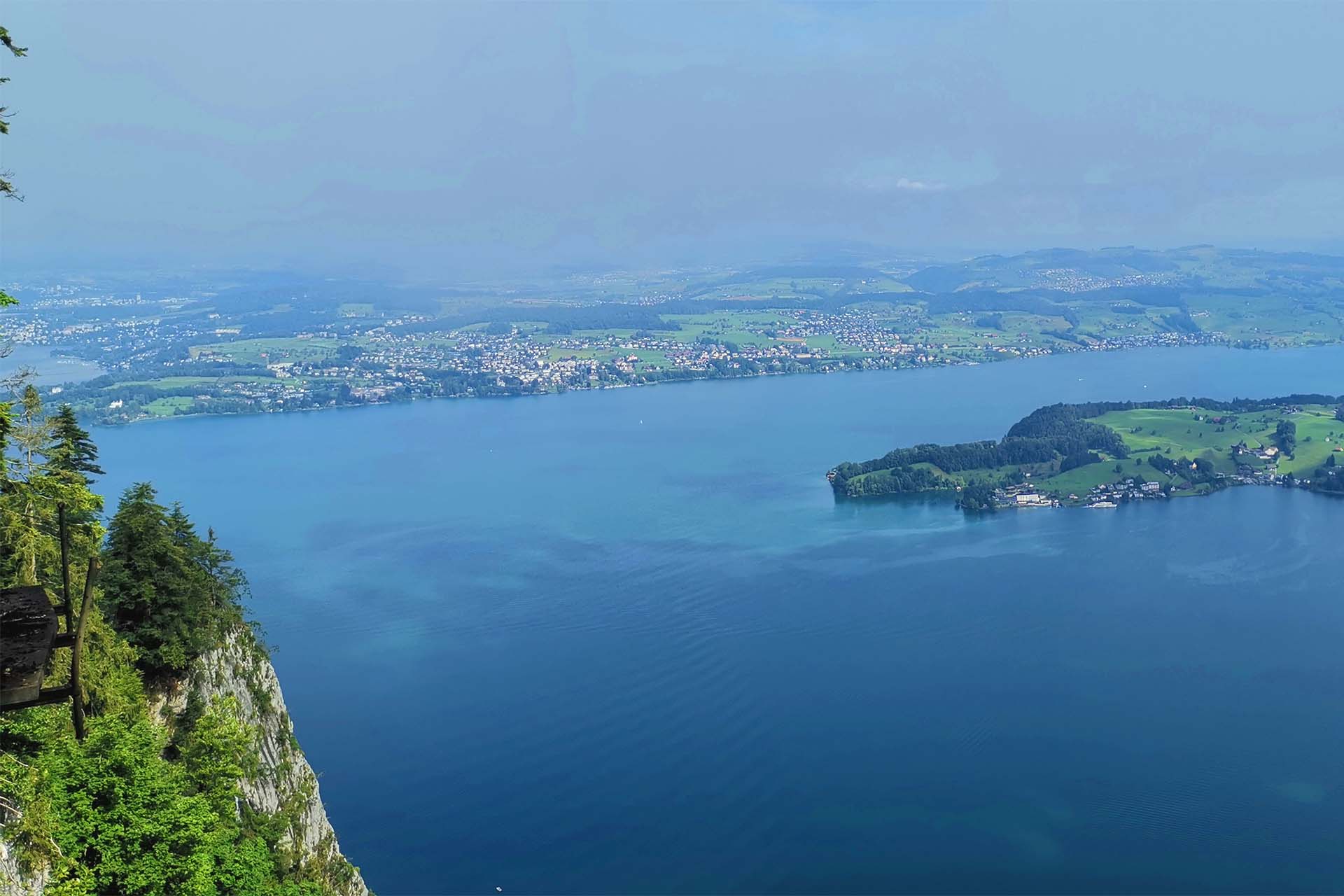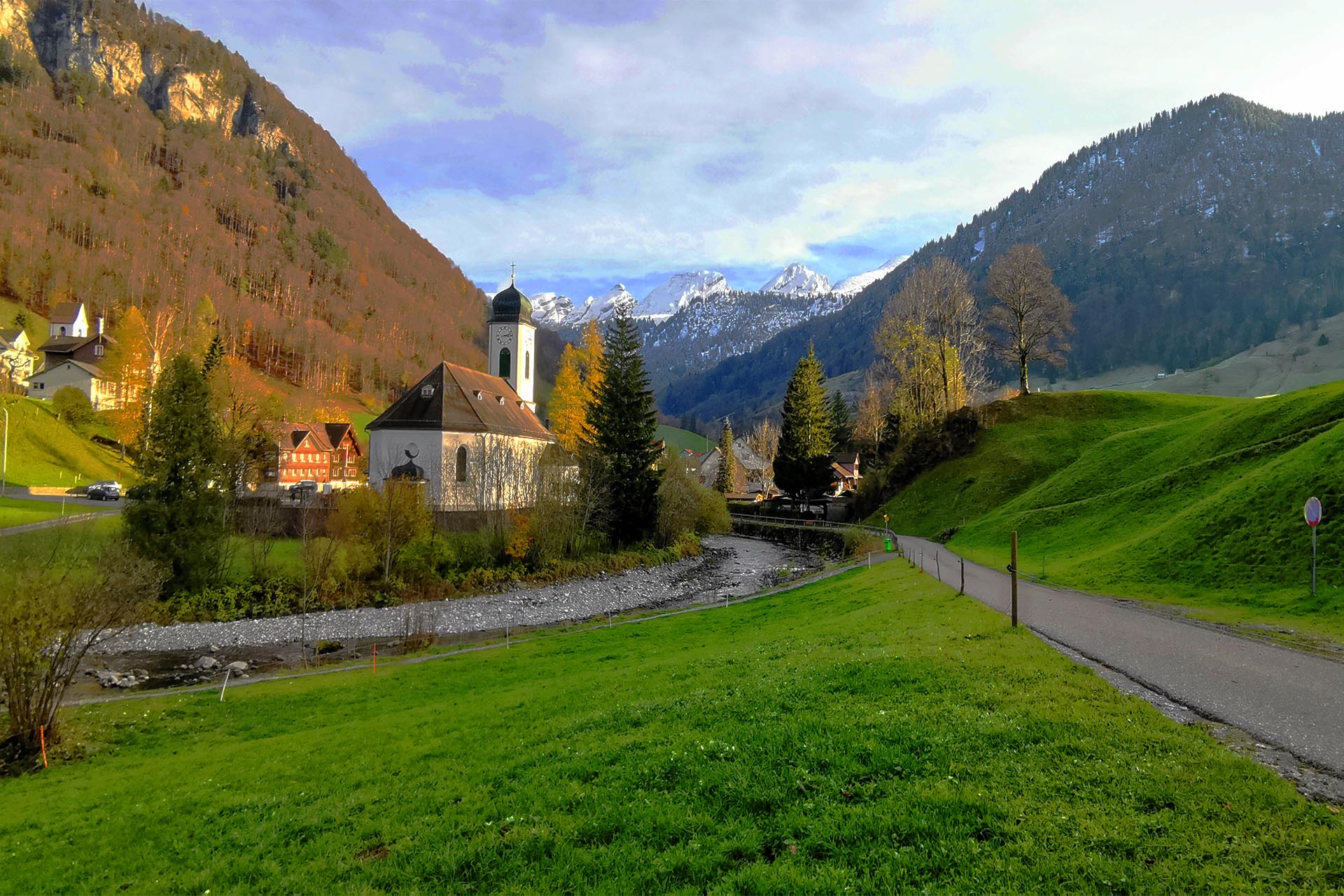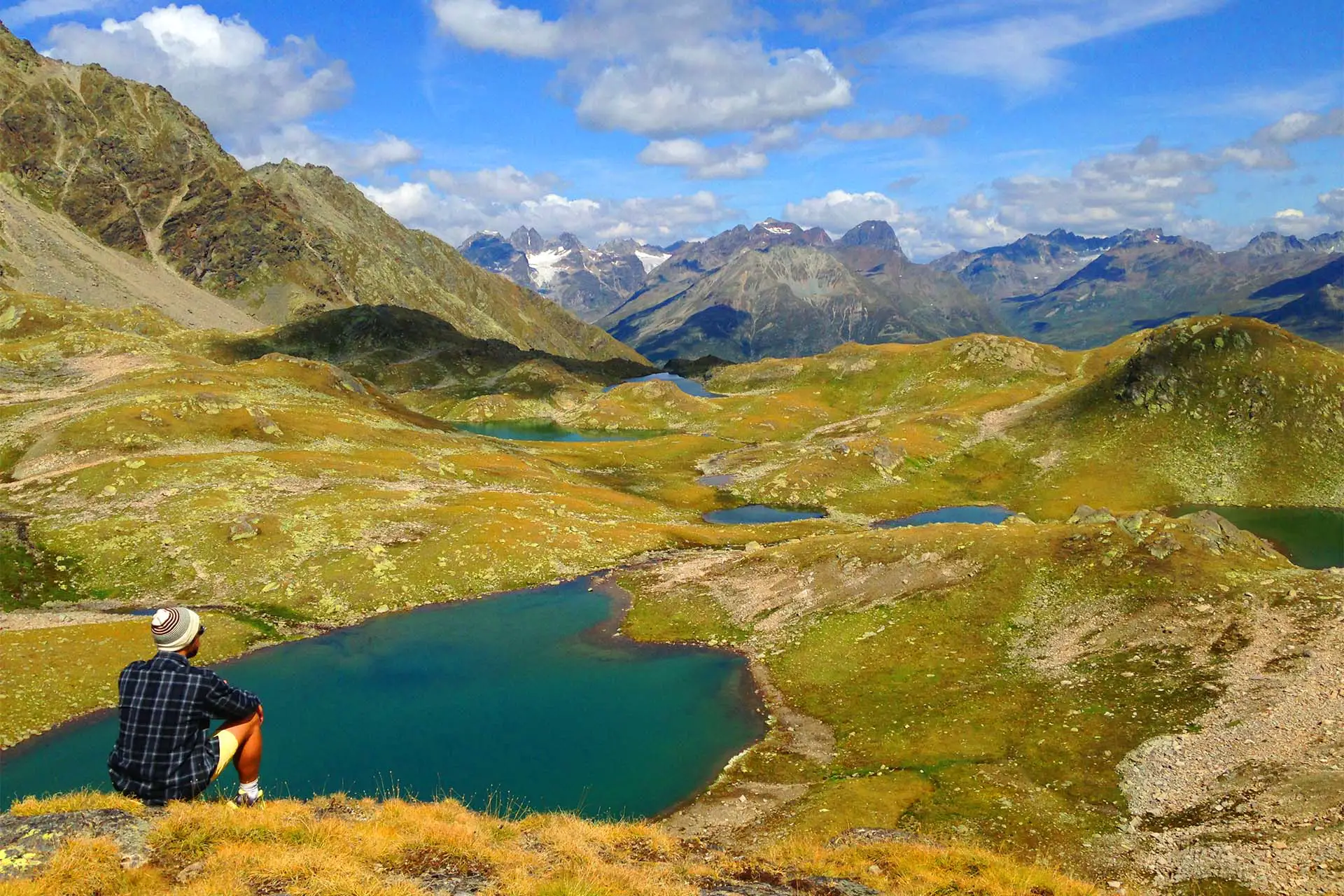In this ultimate “Swiss Alps” guide you will learn everything about nature, the best hikes & train journeys and some of the most beautiful places in the mountains of Switzerland.
Text and pictures by Marc Gottwald
Facts about the Swiss Alps
Switzerland is divided into three units: The Swiss Alps (60%), the Central Plateau (30%) and the Swiss Jura (10%). So the mountain range of the alps make up a full 60%, which is accordingly around 2/3 of the country. Nevertheless, most people, i.e. 66%, live on the Swiss Central Plateau for example in Swiss cities such as „Zurich Switzerland“, „Bern “ or „Geneva“.
Switzerland is a mountainous country with 48 4000 metres peaks. That is more than 1/3 of all mountain peaks in the Alps (Austria, Italy, France and Switzerland) that are higher than 4000 metres. Moreover, almost all of them are in Valais except Piz Bernina in the canton Graubünden and Schreckahorn and Lauteraahorn in the canton Bern. The highest mountain in the Swiss Alps is the Dufourspitze (4634m), which borders at France.
There have been several ice ages in the last 2.5 million years, where the Swiss Alps were often completely glaciated except a few very high peaks. Erosion and meltwater flows led to the formation of today’s Swiss mountains.
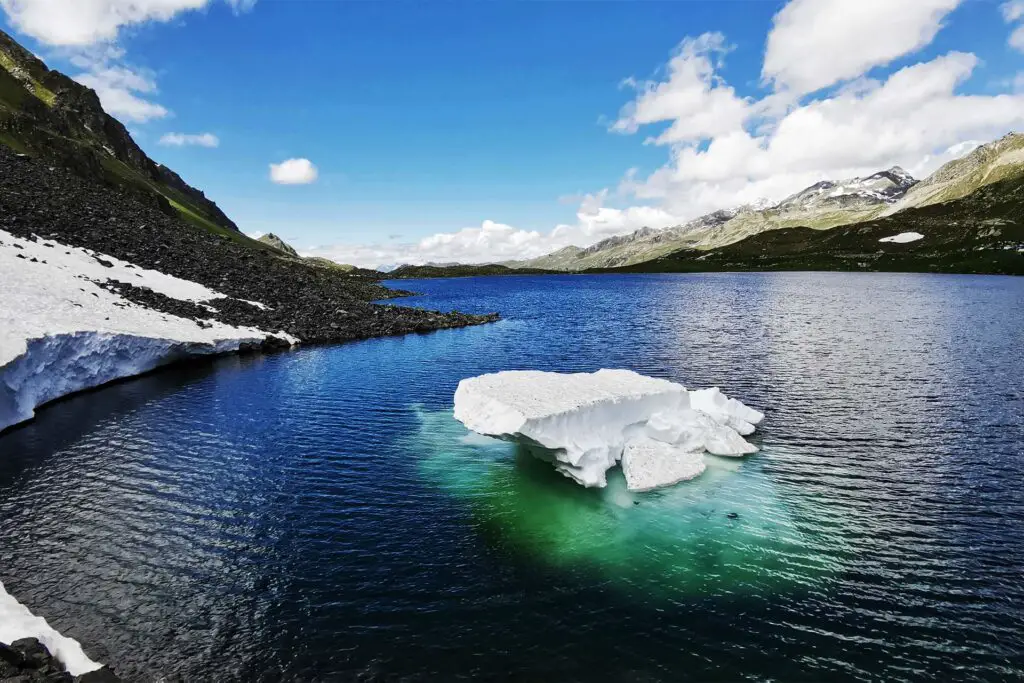
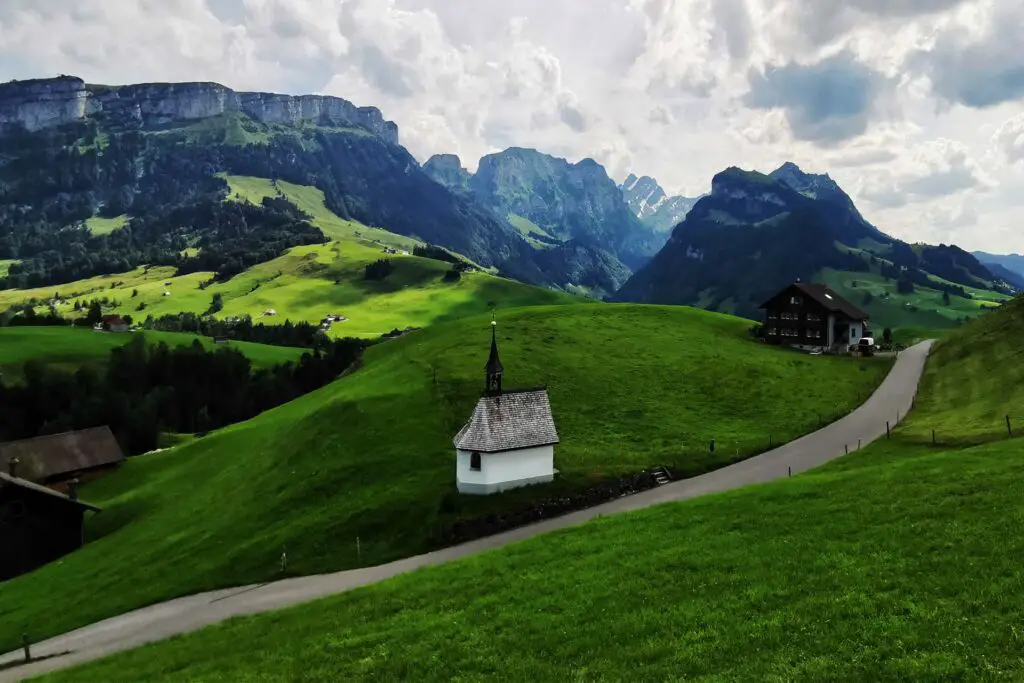
Hunters crossed the Alps already 1000s of years ago and copper mining cleared large areas of forest from the 18th century onwards. The Romans started clearing the forest even earlier (8-14 Y.H.) to build roads and irrigation systems (suonen) in the Swiss Alps like for example in the canton of Valais.
The Swiss Alps influence the climate
The Alps are a prominent climate barrier between northern and southern Switzerland. A typical phenomenon is the Föhn. It brings a lot of precipitation on the southern side of the Alps and dry, warm downdrafts on the northern side of the Alps, which can be very strong, even stormy. Foehn valleys, such as Altdorf in the canton of Uri, have a temperature about 0.5 degrees higher than other comparable valleys. This extends the agricultural vegetation period, but also leads to more damage thanks to the winds.
Since many of the 4000-metre mountains in the canton of Valais lie on the border between Switzerland and France, the clouds often rain themselves out in France and the dry air moves to Switzerland. This is also the reason why the canton of Valais is the driest canton in Switzerland and why irrigation channels have been built.
By the way, did you know that the Alps are the most densely populated mountain range in the world with a total of 11 million people? In addition, there are of course millions of tourists and day trippers every year who enjoy the nature of the Alps and go on great hikes and excursions.
The influence of humans in the Swiss Alps
Climate change affects the Alps directly and indirectly. Directly, because glaciers, permafrost, snow cover decrease and vegetation is changed. Indirectly, because runoff conditions change and debris flows and rockfalls increase. This means that where the soils were stable thanks to permafrost in the Swiss Alps, landslides can suddenly occur, hiking trails have to be closed or are even partially buried. All this is already happening regularly.
There are about 2000 larger and especially smaller glaciers in Switzerland. The glaciers lose about 2.5% of their ice mass every year in the Swiss mountains. In 1850, their glaciers still had twice the ice mass as today.
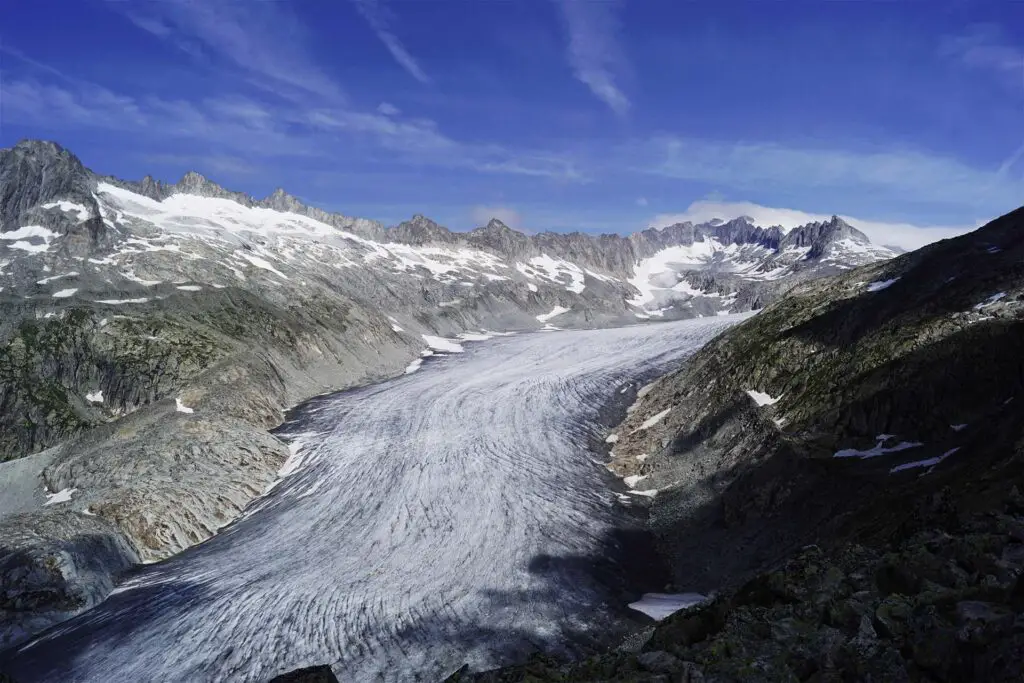
Humans have been directly intervening in the highly sensitive ecosystem of the Alps for a few hundred years with agriculture, power plants, construction, tourism. Environmental changes are particularly noticeable here and the Alps are becoming an early warning system.
We have the problem in the Swiss Alps and in the mountains in general is that the initial causes do not show direct effects, the consequences then usually come coupled with chain reactions.
Moreover, the Alps rise 1-2mm per year. As they are geologically a young mountain range, there are still many processes such as rockfalls, rock slides, avalanches, etc. These developments also threaten people’s infrastructure. The melting of glaciers and permafrost leads to rockfalls and damage worth billions. This is especially true at altitudes above 2400 metres.
Famous places in the Swiss Alps
Switzerland has many famous places in the Swiss Alps. I would like to introduce you to some of my favourite places in this country, and you can find more in our blog with lots of background information and insider tips.
Zermatt Switzerland
Zermatt in Switzerland is one of the most beautiful mountain villages in the Swiss Alps. With the Matterhorn, the 5 Lakes Trail, the village with its wooden chalets and many insider tips, Zermatt Switzerland is hard to beat for its charm. It is not without reason that it is one of the most famous places in the world. There are also great wellness hotels and ingenious Swiss food such as raclette, which comes from the canton of Valais.
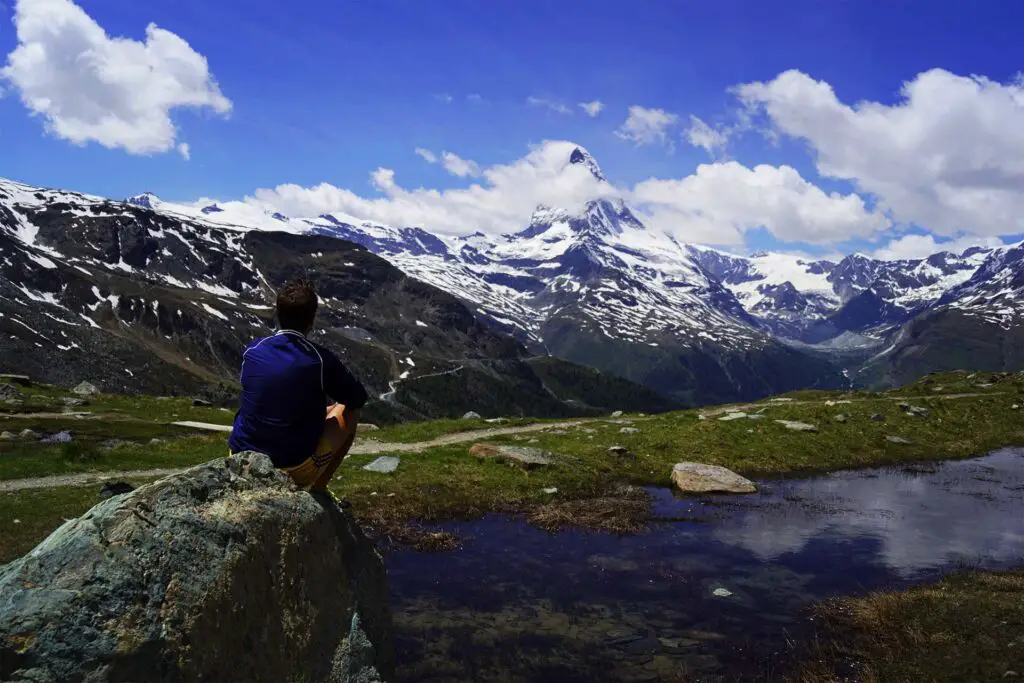
Grindelwald Switzerland
Grindelwald Switzerland is particularly famous for its Swiss mountains. For example, the imposing Eiger, Mönch and Jungfrau tower proudly above the destination. Moreover, Jungfraujoch can be visited by train. There are also countless other great activities to do in Grindelwald, such as visiting Grindelwald First. You can do for example the First Cliff Walk, a visit to Bachalp Lake (Bachalpsee) or the Grosse Scheidegg.
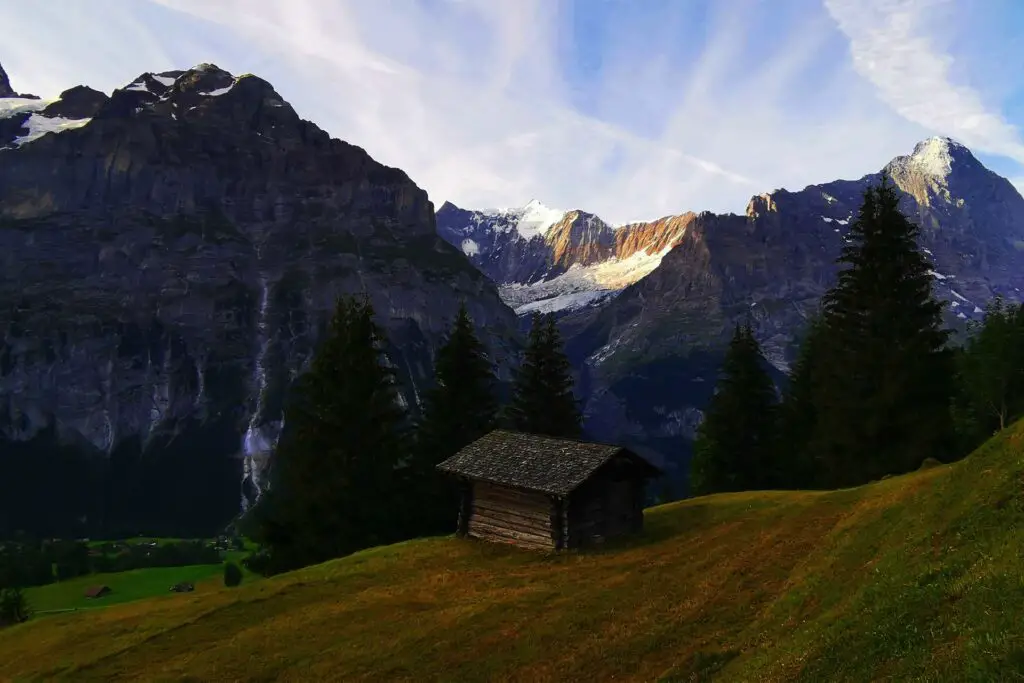
Crans Montana Switzerland
Crans Montana is another very famous place, especially for the rich. One reason is, because the “Omega Masters” golf tournament is held here every year, and the Swiss village also has a lot to offer in other respects, such as luxury and wellness hotels, but also great hiking opportunities in the Swiss Alps.
Gstaad Switzerland
Gstaad is also a place for the rich. Insiders say that chalets worth over CHF 40 million have been built here. But the place is much more than that. Besides the great wellness hotels, there is also beautiful and traditional nature, which I really appreciate. Although Gstaad is part of the Swiss Pre-Alps, it is only a 20-minute drive to the valley station of the Glacier 3000.
Davos Switzerland
Davos is one of the largest settlements in the Alps of Switzerland and is known for the World Economic Forum Davos (WEF Davos), which is usually held in Davos every year. Besides the super wellness hotels, the destination has one of the most unique and diverse landscapes in our country. From green and light blue lakes to great views over the mountains, waterfalls or traditional Walser villages, there is so much to discover here.
As already mentioned, there are countless more well-known places in the Swiss Alps.
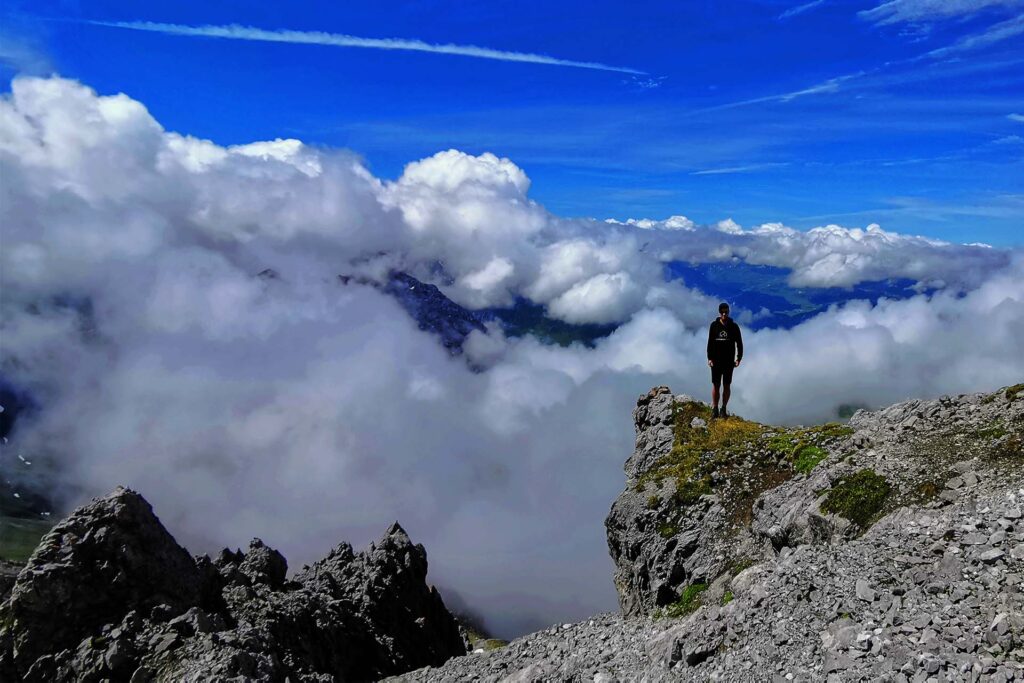
You can find a free Swiss Alps map here. All you have to do is enter your destination at the top and you can find all the hiking trails. Yellow means easy, red is a mountain trail and blue is an alpine trail for experienced hikers only.
Train rides in the Swiss Alps
Switzerland has one of the best public transportation networks. The Alps of Switzerland are also well served by train, bus and cable cars. I would like to show you three “Swiss train journeys” that are truly breathtaking and very worthwhile.
Bernina Express
Next to the Glacier Express, the Bernina Express line is the most beautiful train journey in Switzerland. The line runs either from St. Moritz to Tirano in Italy or Chur-Tirano and crosses mountain landscapes as well as viaducts (Brusio circular viaduct) that are UNESCO World Heritage Sites. This means that the Bernina Express takes you from the glaciers to the palm trees in the south within a short time. It travels through 55 tunnels and 196 bridges.
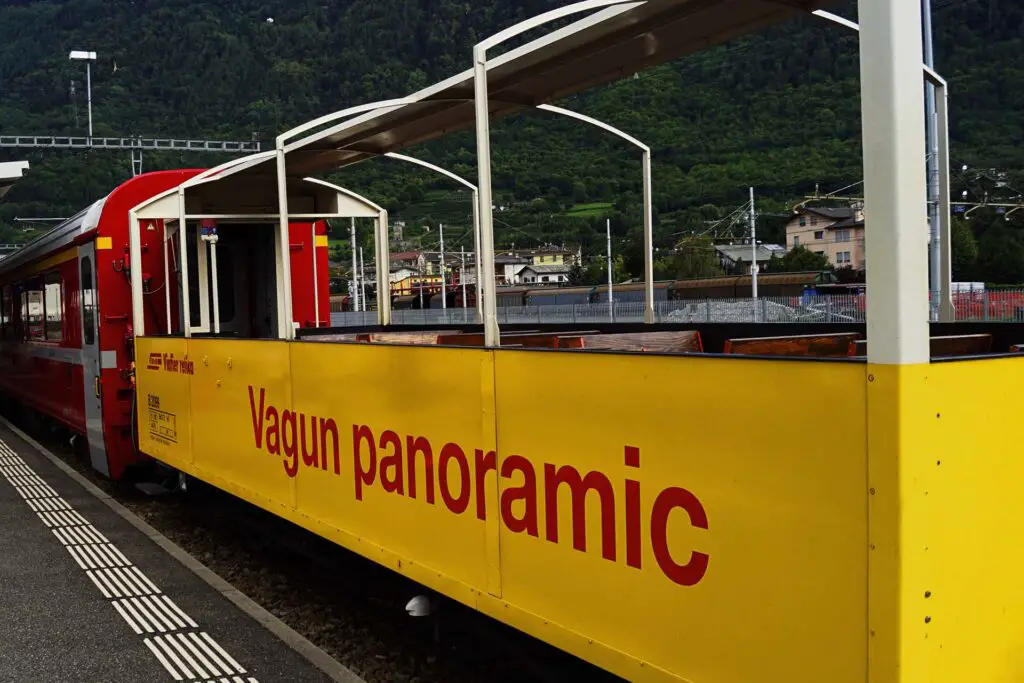
You will also see lots of glaciers and lakes or the famous Alp Grüm. The Bernina Express takes you to the highest station in Europe and in the Swiss Alps, the Ospizio Bernina at 2250 metres above sea level. In summer, the Bernina Line even has panorama cars where you travel without a roof. Reservations on the Bernina Express are compulsory. GA and Supersaver tickets are valid, but the reservation surcharge must be paid.
Incidentally, there has also recently been a Bernina Express bus that runs from Lugano to Tirano.
Glacier Express
Glacier Express, also called the world’s slowest express train, runs from Zermatt Switzerland to St. Moritz. Gastronomy is a central part of the Glacier Express, treating you with gourmet menus on an incredible journey. The Glacier Express travels over 291 bridges and passes through 91 tunnels, with the journey taking around 8 hours. Thanks to the huge windows, you can take great photos and enjoy a great day on the train through the Swiss Alps.
The Swiss GA and day tickets are also valid on the Glacier Express, but here, too, surcharges have to be paid for reservations. A second-class ticket costs 153 francs, with an additional 33 francs for the obligatory reservation surcharge. It is worth taking a day ticket early.
Andermatt – Disentis
Another great train line is the one from Andermatt to Disentis. For example the Matterhorn-Gotthard line takes you past countless tunnels, beautiful mountains and great Swiss villages. The highlight is when the train passes the Oberalp Pass with the large Oberalpsee. Unlike the Bernina Express and the Glacier Express, no reservations are necessary here.
The three most beautiful hikes in the Swiss Alps
Switzerland has a total of over 60,000 kilometres of hiking trails! Yes, you heard right. In this small country, you could walk around the world for 1.5 times. Many of those trails are in the Alps. I would like to show you my three favourite hikes. It was a difficult choice, because the Swiss mountains are so beautiful that you can’t really limit this to three hikes. If you would like to find more Swiss hiking trails, you can check out our blog.
Grosser Mythen Hike Hike
Eventhough the hike up the “Grosser Mythen” near “Lucerne” is very demanding, an incredible reward awaits you. Views over Lake Lucerne, Lake Lauerz and a 360-degree panorama of the Swiss Alps awaits you. Furthermore, the Grosser Mythen hike at sunrise is particularly exciting. You can find out more here.
5 Lakes Hike Pizol
The 5 Lakes Hike Pizol above Bad Ragaz is one of the most beautiful hikes in the Swiss Alps. With the five lakes in different colors in such a small area, no other hike in Switzerland can beat it. This hike is also very strenuous and should only be done by experienced hikers.
Grindelwald First – Grosse Scheidegg
Many people hike from “Grindelwald First” to Bachalpsee. This hike is beautiful, but only a few know that another pearl awaits you on the other side in direction to the Grosse Scheidegg. Passing cows, green meadows and a permanent panorama over the Swiss Alps and their glaciers, you hike from Grindelwald First to Grosse Scheidegg in around 2 hours. You can return to Grindelwald by bus.
Conclusion
With the “Swiss Alps”, Switzerland is a country that attracts hundred thousands of people every year. But the Swiss mountains have so much to offer! Whether culinary delights and relaxation with wellness hotels or the Swiss hiking trails and the incredible nature or the peace and the feeling of freedom.
The “Swiss train journeys” such as the Glacier Express or Bernina Express are also well worth seeing. Thanks to the good infrastructure and diversity, the Swiss Alps have something for everyone and are a real highlight.
If you want to get more inspiration, feel free to download our “Switzerland by Locals E-Book” for free.


